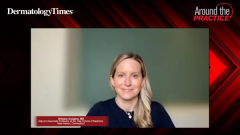
Case 2 Continued: Importance of Combination Therapy and Shared Decision Making
Expert pediatric dermatologists discuss the importance of combination therapy and shared decision-making when treating pediatric patients with atopic dermatitis.
Episodes in this series

Joshua Zeichner, MD: What about combination therapies? How do you guys like to put together your combination routines? Steroids, nonsteroids, emollients—what are you commonly recommending to your patients?
Vikash Oza, MD: It depends. When we’re seeing them, especially the first time, usually the patient is in a flare. As we talked about before, this is a lot of times where I’m using a topical steroid. In terms of how long do we tell them to treat for, I’ll often say, “We treat to the point when you feel that the skin is clear, and then for several days even beyond that, whether it’s 3 to 5 days.” I give most patients an average window. That might be 10 to 14 days of therapy. Then a lot of times, there’s a cool-down period where you’re at risk of reflare, so you could potentially then go to a nonsteroid-based therapy that you’re using every day on those hot spots, with your gradual goal of seeing if you can adopt the maintenance regimen 2 to 3 times a week.
We have finessed in other ways, such as maybe a couple steroids on the weekend and the nonsteroid during the week. We have different ways of playing it out. But giving them a road map of what to expect and where we want them to be is helpful. An action plan or road map is important, and recognizing problems, such as the burning sensation that Brittany talked about. That’s when you’re putting it on red-hot inflamed skin. That’s going to be a problem. Other tips include keeping the tacrolimus cool in the refrigerator, which might reduce stinging. But a lot of times, it’s because we’re trying to use it on very inflamed skin.
Joshua Zeichner, MD: At what point are you having a conversation with the patient or the patient’s family about moving from topicals over to systemic medications or biologics? How do you make that decision? How do you broach it to the families?
Vikash Oza, MD: We don’t make it ourselves; we make it in concert with the family. That’s the whole concept of shared decision-making. We decide when we think we’ve done our due diligence—such as thinking about contact dermatitis, like in this case—and have had a follow-up where we feel like there has been good compliance. The reality is that there are all these new markets coming to the table because some of these topical steroids aren’t that effective. There might be ones that are going to have superior efficacy that we’ll luckily be able to go through and help moderate patients.
Then we weigh risks and benefits, talking with patients about the reality that was just talked about and an injection that makes it potentially once a month. We talk about how frequently some of the adverse effects are with dupilumab and how we have experience in managing them. We talk about the impact factor that it’s already having in this child right now, with bullying, potentially internalizing behavior issues with depression and anxiety, and the great impact that can have without addressing it early. Once we’ve done all we felt we could do for the patient but they still fit into the moderate to severe category, we let them know that we have medicines that are safe, approved for their age group, and could make a significant improvement.
Brittany Craiglow, MD: I completely agree. You want to make sure that you’re eliminating other diagnoses that may be complicating the picture. Then, for me, it’s about how this is affecting the way the child or the patient is interacting with the world. If it’s doing that in a meaningful way, such as if they aren’t going to school or sleeping well, and they don’t want to raise their hand because they’re afraid that someone’s going to see their skin, and they’re doing all the right things, then it’s time to move on.
When the choice was cyclosporine, it was a bit of a different conversation. This is a systemic medicine. It isn’t a vitamin. There are some potential risks. The risks are low, but they’re there. Every family has a different level of risk aversion. There are a lot of questions, and it’s important that we make this decision together, as Vikash said. Sometimes I’ll say: “We know from the data that most people are going to be close to where they’re going to be by 3 or 4 months with dupilumab.” We try it for 3 or 4 months, and then we can see how things go.
The injections can be hard. They usually aren’t a deal breaker, but every so often, if a child is needle phobic, that can play in, too. It’s a 2-way conversation, and weighing risks and benefits. But if it’s potentially changing the child’s trajectory, these children are so obvious. They’re missing school or getting infections. Then there are children who maybe aren’t waking up scratching every night, but when they flare, they’re missing school or aren’t able to concentrate as well. These little things can add up to move the needle for them, and that’s important to keep in mind.
Transcript edited for clarity
Newsletter
Like what you’re reading? Subscribe to Dermatology Times for weekly updates on therapies, innovations, and real-world practice tips.
























